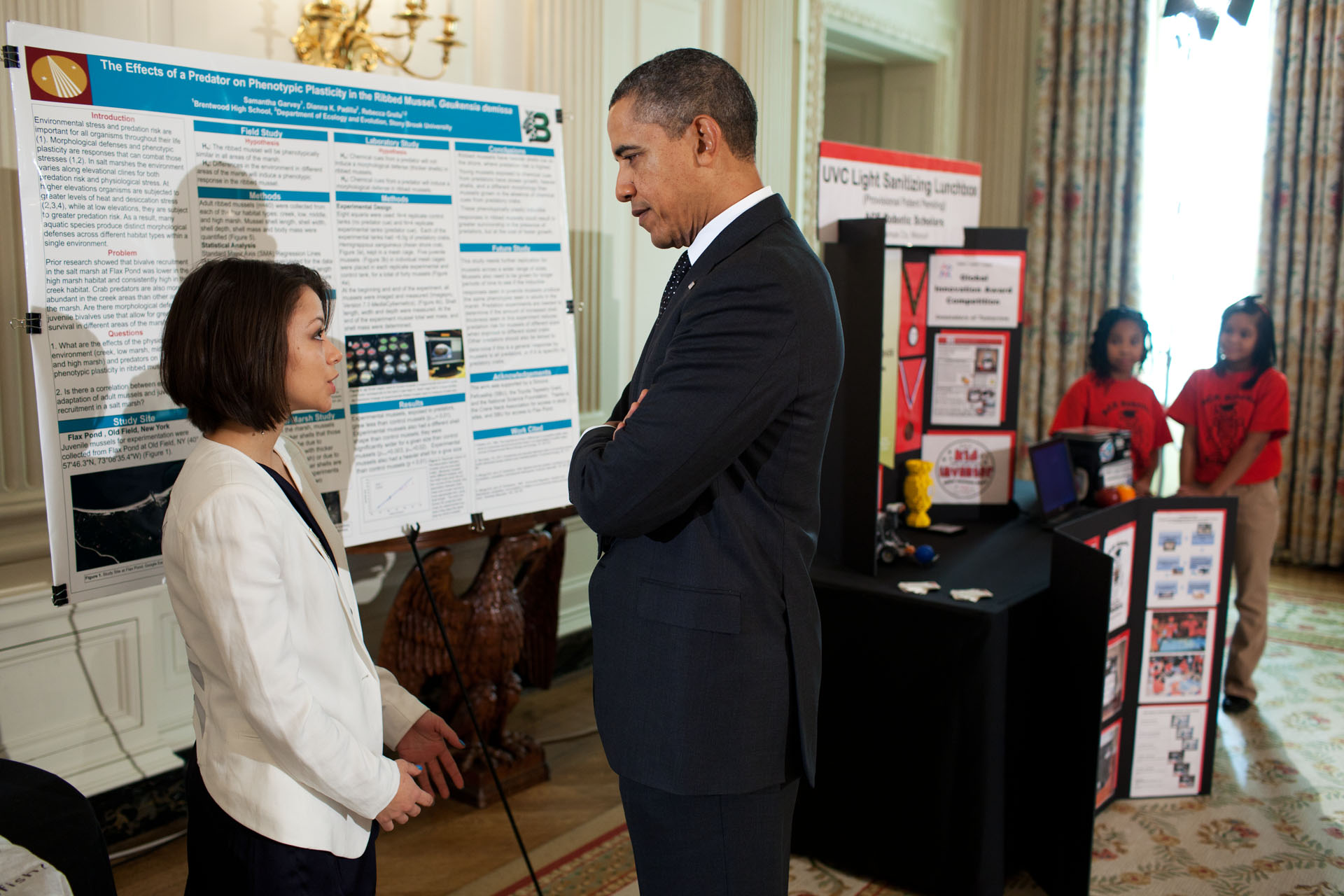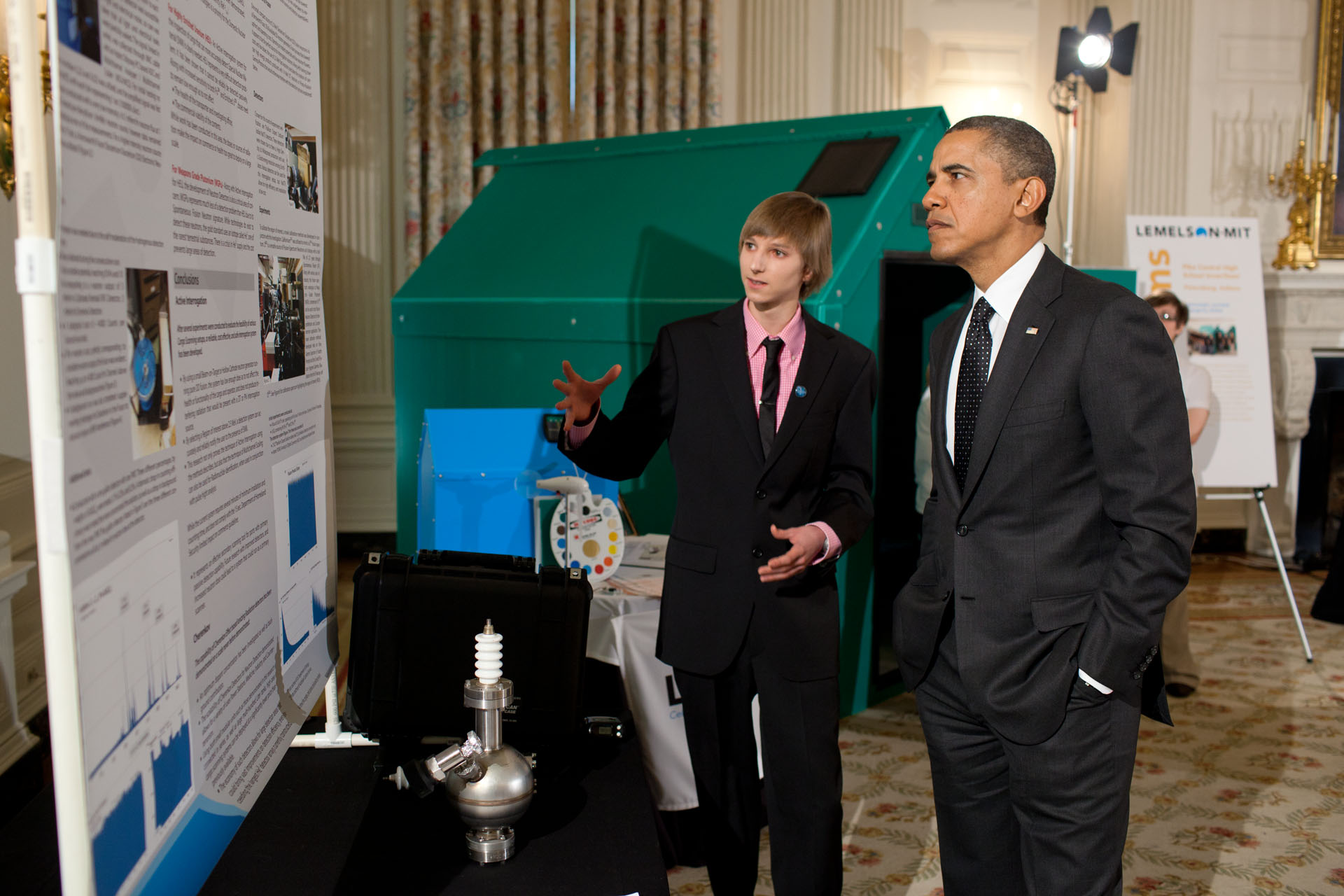
Today, President Obama hosted the second-ever White House Science Fair, featuring research and inventions from more than 100 students representing 30 student teams. From robots in the Blue Room to rockets in the Red Room to marshmallow cannons in the State Dining Room, projects showcased the talents of America’s next generation of scientists, engineers, inventors, and innovators.
After viewing some of the displays and talking with students about their work, the President addressed students, parents, and teachers in the East Room.
“When students excel in math and science, they help America compete for the jobs and industries of the future,” said President Obama. “That’s why I’m proud to celebrate outstanding students at the White House Science Fair, and to announce new steps my Administration and its partners are taking to help more young people succeed in these critical subjects."
The fact is, not enough students are studying subjects like science, math, and engineering to fill the jobs of tomorrow. A report released yesterday by the President’s Council of Advisors in Science and Technology found that one million additional graduates with so-called STEM degrees (Science, Technology. Engineering and Math) are needed over the next decade to fill the growing number of jobs that require these skills.
The President announced several new initiatives to increase the number of students studying STEM subjects, and to prepare the 100,000 math and science teachers we need to teach our future engineers, inventors, and innovators, including:
- A priority on undergraduate STEM education reform in the President’s upcoming budget, including a $100 million investment by the National Science Foundation to improve undergraduate STEM education practices.
- A new K-16 education initiative jointly administered by Department of Education and the National Science Foundation to improve math education
- Commitments from private sector groups and coalitions to do more to get students excited about STEM-related
- New policies to recruit, support, retain and reward excellent STEM teachers, along with an $80 million investment in the President’s upcoming budget tohelp prepare effective STEM teachers.
- A new $22 million investment from the philanthropic and private sector to complement the Administration’s teacher preparation efforts.
For more information:
- Read more about the President’s new STEM initiatives
- Bill Nye, the Science Guy, on the importance of scientists, engineers, and inventors
- Watch President Obama fire a marshmallow cannon at the White House Science Fair




